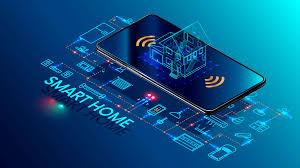To build a simple IoT application using an IoT platform, follow these general steps:
- Define the Application Use Case: Determine the specific problem or scenario you want to address with your IoT application. For example, you may want to monitor temperature and humidity levels in a room.
- Select an IoT Platform: Choose an IoT platform that suits your requirements. Consider factors such as device compatibility, scalability, data management, analytics capabilities, and ease of development. Some popular IoT platforms include Microsoft Azure IoT, AWS IoT Core, and Google Cloud IoT Core.
- Set up the IoT Platform: Create an account on your chosen IoT platform and set up the necessary configurations. This typically involves creating a project, defining device types, and configuring connectivity options.
- Connect IoT Devices: Connect the IoT devices (sensors, actuators, or any other connected devices) to the IoT platform. Follow the platform’s documentation to register and provision devices. This usually involves obtaining device credentials and configuring the devices to communicate with the platform.
- Send Data to the IoT Platform: Program the IoT devices to collect data from sensors and send it to the IoT platform. This can be done using the platform’s APIs or SDKs. For example, if you are using MQTT as the communication protocol, you may need to implement MQTT client functionality to publish data to the platform.
- Data Processing and Storage: Configure the IoT platform to process and store the data received from the devices. This may involve defining data ingestion pipelines, setting up data storage options (such as databases or data lakes), and configuring rules or triggers for data processing.
- Visualization and Control: Use the IoT platform’s capabilities to visualize and control the data. Create dashboards or user interfaces that allow you to monitor the data in real-time, set thresholds, and trigger actions based on specific conditions. This can involve creating custom visualizations, alerts, or notifications.
- Analytics and Insights: Leverage the analytics capabilities of the IoT platform to gain insights from the data collected. Apply data analytics techniques, such as machine learning algorithms, to detect patterns, anomalies, or trends in the data. This can help you make data-driven decisions and optimize your IoT application.
- Test and Iterate: Test your IoT application thoroughly to ensure its functionality and reliability. Iterate and refine your application based on user feedback and requirements.
- Deployment and Monitoring: Deploy your IoT application in the desired environment, whether it’s on-premises or in the cloud. Set up monitoring and logging mechanisms to track the performance and health of the application and devices.
Building an another simple IoT application involves a few key steps. Let’s walk through the process using an IoT platform:
Step 1: Define the Objective: Decide on the specific objective or functionality you want your IoT application to achieve. For example, monitoring temperature and humidity levels in a room.
Step 2: Hardware Selection: Choose the appropriate hardware components for your IoT application. This may include sensors, microcontrollers or development boards, actuators, and communication modules. Common choices include Arduino or Raspberry Pi.
Step 3: IoT Platform Selection: Select an IoT platform that aligns with your application requirements. Consider factors such as device connectivity, data processing capabilities, analytics, and scalability. Popular platforms like AWS IoT, Microsoft Azure IoT, or open-source options like Eclipse IoT can be considered.
Step 4: Set Up the IoT Platform: Create an account on the selected IoT platform and set up the necessary configurations. This typically involves provisioning devices, setting up security credentials, and configuring data ingestion and storage.
Step 5: Connect Devices: Connect your hardware components to the IoT platform. This involves configuring the hardware to connect to the platform’s communication protocol, such as MQTT or HTTP, and providing necessary authentication credentials.
Step 6: Data Collection and Processing: Write the code for your IoT application to collect data from the sensors connected to your hardware. This may involve reading sensor values and packaging the data into a format suitable for transmission to the IoT platform.
Step 7: Data Transmission: Use the appropriate communication protocol to send the collected data from your hardware to the IoT platform. Typically, MQTT or HTTP protocols are used for this purpose.
Step 8: Data Storage and Analytics: Configure the IoT platform to store the received data and set up any necessary analytics or rules for processing this data. This can include real-time analysis, visualization, or triggering notifications based on certain conditions.
Step 9: User Interface: Create a user interface to interact with your IoT application. This can be a web or mobile application where users can view real-time data, control actuators remotely, or access historical data and insights.
Step 10: Testing and Deployment: Test your IoT application to ensure all components are communicating correctly and the desired functionality is achieved. Once tested, deploy the application in a live environment.
Remember, the specific steps and configurations may differ based on the chosen IoT platform and hardware components. It’s important to refer to the documentation and resources provided by the IoT platform and hardware manufacturer throughout the development process.
Remember, the specific steps and configurations may vary depending on the IoT platform you choose. It’s essential to refer to the platform’s documentation and resources for detailed instructions tailored to that platform.
